originally posted on our partner Circlewood’s blog, The Ecological Disciple, here. Above photo: SYNERGY, 2009, LAKE WANAKA, NEW ZEALAND
When viewing the work of collaborative artists Martin Hill and Philippa Jones of New Zealand, the precariousness of the art may be the first thing you notice. As with other environmental artists, including Andy Goldsworthy, who I have written about in the past, the viewer often wonders, “How did they do that?” In addition to the precariousness of the design, there is a precariousness in its very existence; the work is temporary, often with photographs being the only lasting record of its existence.
The Shape of Time
The temporary nature of the work parallels how these two artists see their world and their work. Their art has much to say about the way we live in this world and the changes we need to make to live better within it.
Given that the earth is fundamentally a circular system (consider seasons, the water cycle, the cycles of plant life), the things that last are those that are sustainable. In natural systems, which have developed over time, things either adapt or die, depending on whether they are sustainable or not. If something is sustainable, it takes only what it needs from the natural system and eventually returns those things back into the system. All of nature itself operates in this same sustainable, cyclical pattern—a self-sustaining system, one that humanity essentially adhered to until recent times.
Industrialization, however, has brought about a different way of living. With its dominant view of time as linear, modern practice mostly disregards cyclical sustainability, using resources without concern for either what is being taken from earth systems or what is being put back into those same systems. Progress, rather than sustainability is the driving mindset, with short-term goals such as the extraction of resources or the success of a particular project being the sole focus.
…the aim of human industrial design is money and instant effect. It travels the shortest distance between wanting and making; and when wanting fades and making proves imperfect, the product is cast aside and the voracious appetite of humanity pushes onward, making more and more things, using more and more resources, creating more and more waste. Such a design process is called a linear system and it follows a take-make-discard model of production. [1]
This linear perspective sees time as a strict movement forward, with no need or desire to circle back, but only progress from a distinct beginning toward a future end, supposedly better and distinct from what has been.
This perspective tends to devalue the present, seeing it only as a stepping stone to the future. The earth itself can be disregarded within this mindset as it is reduced, in the economic point of view, to a mere conglomerate of resources to be used, or in the overly spiritual point of view, as an insignificant waypoint on the route to heaven. Neither of these views values the earth itself as a gift from God which we are meant to love, nurture, and protect, and neither view fosters sustainability.
It can be difficult to change a mindset we are immersed within. How difficult is it for you to look at time from a cyclical viewpoint instead of a linear one? Do you think this changes how you view issues of sustainability?
The Shape of Systems
The disconnection between the human system and the natural system can be seen as humans both suck up tremendous amounts of limited resources and also dispel waste that cannot be absorbed healthily back into the natural system. The art of Hill and Jones spotlights this difference between the destructively linear human systems and Nature’s restorative cyclical systems.
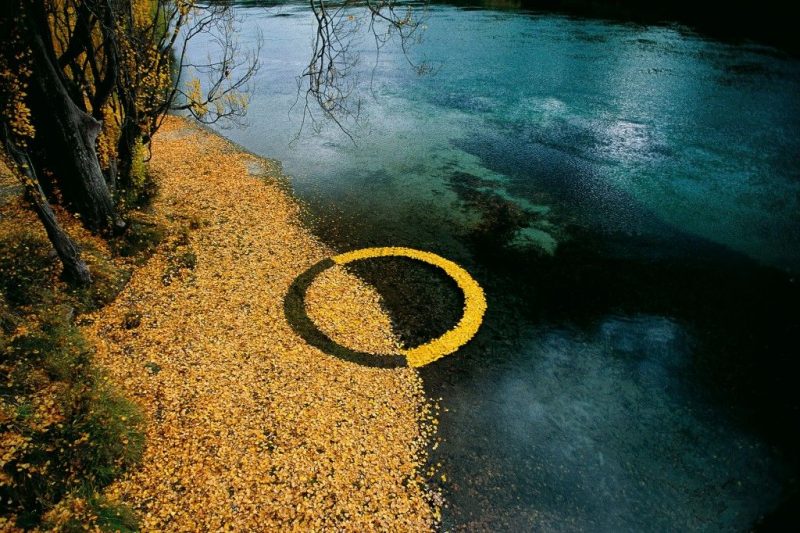
AUTUMN LEAF CIRCLE, 2010, CLUTHA RIVER, WANAKA, NEW ZEALAND
This value of sustainability is present both practically and thematically in the art they create.
Practically, the materials they use are from the natural environment and when the sculpture is complete, it is “returned to nature, thereby mimicking natural systems that operate without creating waste. Everything dies and becomes food or energy for something else.” This creates a closed loop design consistent with the circular pattern of sustainability which natural systems are based on. Nothing is wasted.
Thematically, sustainability is addressed through the specific meanings that Hill and Jones connect to the shapes they use in their sculptures. Knowing the language of those shapes—what each shape represents—deepens the viewer’s experience and understanding of the art. Spheres and discs typically represent the earth, with its natural cyclical cycles. The spiral represents growth and the infinity symbol represents continuous flow or eternity. Straight-sided forms such as triangles, diamonds or squares represent human technology and man-made systems.
Their art shows both the aesthetic and practical beauty of these systems working harmoniously, and particularly emphasizes the necessity of human systems fitting themselves within the natural systems that exist. You can see the aesthetic beauty of this when you see works such as the one pictured below. The placement of a semicircle upon a reflective surface, such as a lake, turns the surface’s reflection into the other half of that semicircle. The result is complete circle, a joint art project on sustainability in which one half of the project is man-made and the other half is nature-made. In a sense, this partnership creates the complete work work of art.
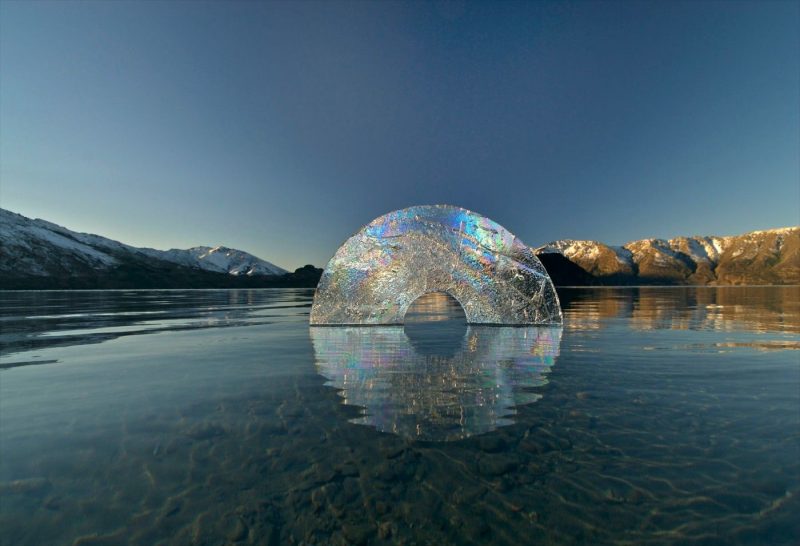
The interplay between man and nature is portrayed symbolically in artwork such as the sculpture, “Solve for Pattern,” which is pictured below. By placing a diamond (representing man) within a circle (representing nature), the artists are showing through metaphor that human systems must adapt themselves and fit within the natural systems around them.

What can you do to create less waste and consume fewer unneeded resources? Are there ways in which you intentionally adapt to fit within the earth’s natural systems? Are there ways in which you perhaps unintentionally disregard the earth’s natural systems?
Giving a Better Shape to Humanity
In their recent work, a human shape has begun to appear in many of the pieces. This is due to the realization that we have entered what is being called the Anthropocene era—a time in which humans are the species with the most dominant influence on earth.
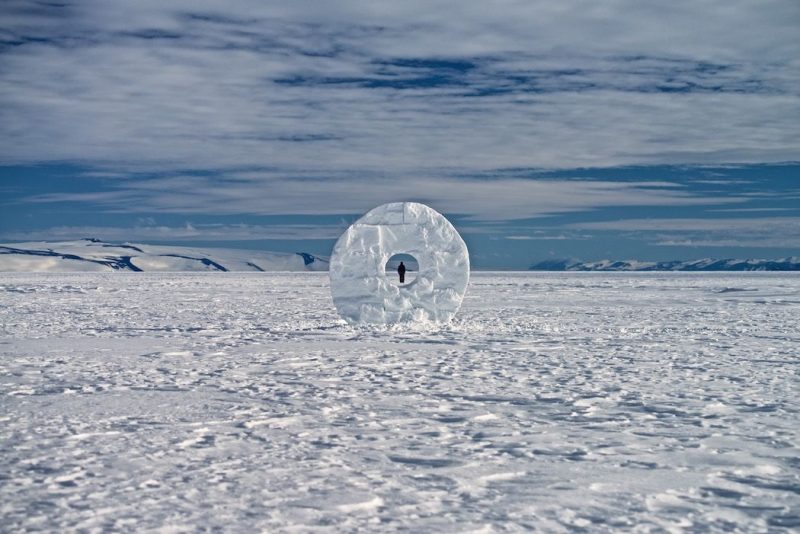
As the species having by far the largest effect on the earth, we are also the species capable of changing the ecological trajectory. Humans can be either guardians or destroyers, a truth represented in these sculptures through the inclusion of the human figure. Below, marsh reeds create an outline of a person’s figure, and the title, Wetland Guardian, highlights the positive role man can and must take on if the planet is to recover its equilibrium.
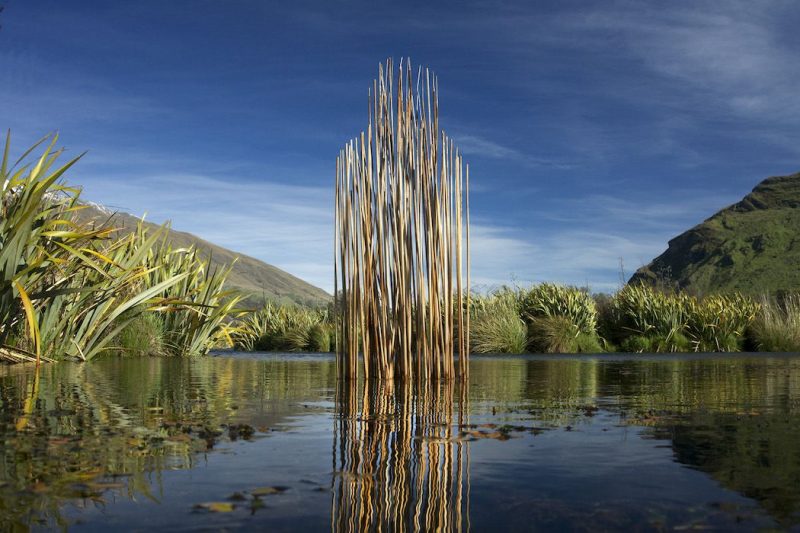
It is interesting to think about how we view our own personal legacy. Often when people want to leave a mark on the world, it has to do with leaving a signpost of their own existence. It is interesting to consider what it might mean to approach this more humbly, with more of a sustainable, cyclical mindset – for me personally, our parent organization, Circlewood, continues to help my thinking in this area. What might it look like to have a positive, sustainable effect on the world you are a part of?
Hill and Jones continue to work to bring about change in how we view the world. After 25 years, they recently completed a project called the Fine Line Project, which emphasizes the connectedness of the earth through a symbolic line that ties together 12 environmental sculptures that they placed in remote locations such as Madagascar and Antarctica. The “line” encircles the globe, bringing home the reality that all the locations of the sculptures (and all the places in between) are part of a connected whole, the circle of the earth we live on.
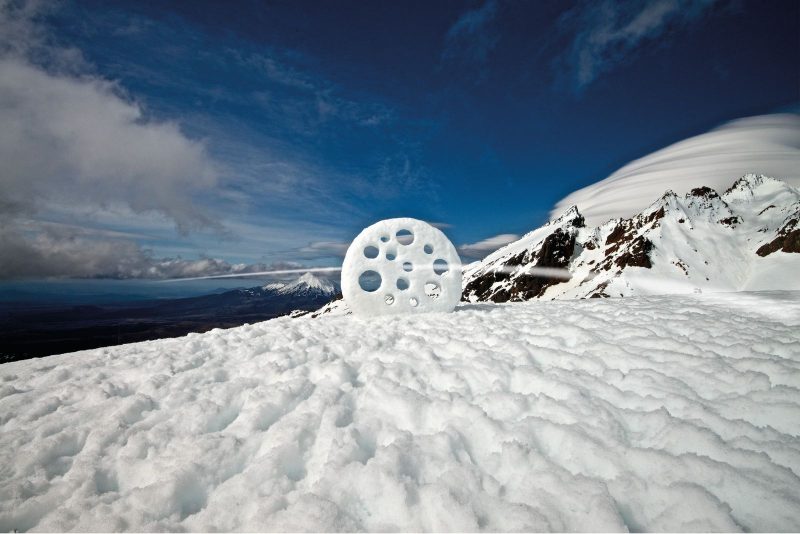
SCULPTURE NO.12, MT. RUAPEHU, NEW ZEALAND 2019
To learn more about Martin Hill and Philippa Jones and see more of their work, visit Martin Hill’s website.
Feel free to contact me directly at info@circlewood.online. – Louise
 Tomorrow! Wednesday, April 6th, join Christine Sine and Lilly Lewin for a discussion on the injustice of Holy Week. Live on Facebook in the Godspace Light Community Group at 9am PT. Can’t join us live? Catch it later on youtube!
Tomorrow! Wednesday, April 6th, join Christine Sine and Lilly Lewin for a discussion on the injustice of Holy Week. Live on Facebook in the Godspace Light Community Group at 9am PT. Can’t join us live? Catch it later on youtube!

